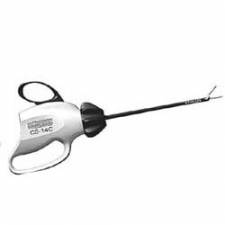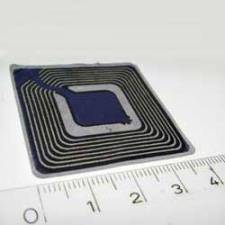In modern and forward thinking Hospitals, it has been realised that prevention is better than cure, and that proactive, rather than reactive management brings the best results.
This is true for managing human resources, to change policies and (just as importantly) for managing the medical devices that all Hospitals use for diagnostic and clinical care.
Many devices require regular and effective maintenance to operate correctly and meet their design specifications. The consequences of ineffective maintenance can be huge in terms of patient care, personnel morale and management time.
Such consequences are often overlooked or miscalculated because device breakdowns are not just a cause of lost time but have a direct effect on patient throughput, efficiency and thus waiting lists. Therefore, the importance of effective maintenance to reduce the occurrence of such incidents cannot be overstated.
Planned Preventative Maintenance
The management of this maintenance for single or for few devices is relatively simple.
However, most Hospitals have thousands of medical devices and to correctly maintain these devices can be difficult or impossible without a formalised computerised scheduling system (database). EBME / Medical Physics departments should have a structured approach to planned preventive maintenance projects and should implement a computerised system, or audit, refine and improve the effectiveness of the existing implemented system.
Implementation
- Ensure that work fits with and enhances existing systems.
- Follow a structured & proven methodology.
- Relevant staff are fully and properly trained so that they are confident and competent.
- Maintenance Planning includes all the planning and analysis associated with the establishment (for the overall maintenance support) of a medical device throughout its life cycle.
Maintenance Planning constitutes a sustainable level of activity (dependant upon adequate resources) commencing with the development of the maintenance plan, implementation and performance review.
The program decisions on the Planned Preventative Maintenance plan should take into account several factors.
e.g., does the program support the development of a new system or is it an upgrade to an existing system that is currently supported?
Provide a performance-based Statement of Work (SOW) or Statement of Objectives (SOO)
- Specify and define maintenance levels in the SOW and specification with basic maintenance functions identified for each level
- Quantitative parameters established for Turn-Around Time (TAT)
- Mean Time To Repair (MTTR)
- Mean Time Between Failure (MBTF)
- Mean Logistics Delay Time (MLDT) at each level. (The lack of adequate supply responsiveness has a major detrimental effect on total logistics support.)
Define and state Level of Repair (LOR) policies
- Discard verses repair;
- Just-In-Time-Maintenance;
- Criteria for LOR decisions (i.e. 1st, 2nd, 3rd line definitions);
- Identification of the applicable maintenance level and Supplier/Vendor for each repairable device;
- Criteria for required Support Equipment, specialist tools, test equipment, parts and software required at each maintenance level.
Planning and scheduling functions are the key deliverable actions of the planning role. This is where the most gains in execution have the potential to be made and acted upon. In some larger organisations these are split, allowing more adequate resources for each role.
The role of the planner needs to cover the full range of the work order database system, from input into coding, prioritisation, reporting, and a degree of autonomy in execution. As such these roles, more and more, need to be staffed by skilled and versatile people with a high degree of experience in equipment maintenance. They should be able to expertly use and manage the database software. These roles are often left to the quality manager or chief technician.
The difference between planning and scheduling needs to be clear. These are differing areas worthy of differing measurement and improvement initiatives.
Planning
Planning can occur at any stage during the life of a works order. An electronic indicator in the work-order system needs to be able to identify the work-order by 'status' i.e. planned ; ad-hoc ; remedial ; etc.
In this manner work orders requiring parts, procedures, documents, skills or specialist test equipment can easily be focussed upon.
A work order cannot be considered planned until all of these have been properly considered and made available.
Exception (non - conformity) reporting needs to highlight:
- No resources
- No cost estimates
- No parts
- Incorrect asset coding
- Etc.
At this point, only, does it become a "Planned" work-order. Not all require planning; this also needs to be included in any indication, i.e. on - loan.
Scheduling
Scheduling is the function of co-ordinating all of the logistical issues around the issues regarding the execution phase of the work. This can also uncover some areas of planning deficiency, which needs to be captured.
Scheduling is best performed in a capacity-scheduling manner, whereby the following takes place. Most modern database systems have the capacity to output data to spreadsheets or similar. This is where the majority of scheduling work needs to occur.
Overhead labour hours such as meetings, break times and training times should also be gathered, along with holidays and scheduled as standing work orders for future performance analysis of the database.
Addition of corrective and approved improvement actions as dictated by the quality system and operations plan. These are to be planned work orders only. A guide could be: Age of work orders against priority.
The combination of corrective, preventative and improvement work needs to total the levels set for planned / scheduled work. Although this does constitute the most effective use of labour and resources, there are advantages to planned/unscheduled works. A workable level is 70%- 80% . (100% would not be achievable in a large Hospital, so it is better to set realistic targets in your quality system and aspire to 100%).
Review of this by week/month needs to focus on executed work orders. In this manner re-scheduled work orders, while important though difficult to fully quantify, can be captured in hours terms (by omission). By setting a level of 70% - 80%, for example, you know that the schedule was forecast to that level and it is therefore acceptable that any outstanding work orders can be re-scheduled.
Unplanned and unscheduled work makes up the majority of breakdown work orders. However modern systems do contain template work orders. Focusing of these on corrective actions can produce a "planned" and breakdown work order (improving use of human resources by carrying out any planned work as part of the corrective work order).
Work order instructions containing all planned information including parts and resources requirements can take a lot of the work out of the planning function, so that it can be focussed more on improvement. Additional tips or instructions, improving the safe working practices and reviewing the stores re-stock levels can offer areas of improving work order templates, delivering a more efficient and accurate tool for scheduling and execution.
This is by no means a total explanation of the planning and scheduling function, reporting tools and/or processes. It seeks to highlight areas most neglected where immediate improvements, through application, can be easily implemented.
Risk Based Inspection Planning

Reduces maintenance costs and improving efficiency
It is becoming ever more important for medical devices and their component parts to work longer at a minimal increase to costs, improving patient care with higher levels expected in terms of reliability and quality.
Risk-based inspection (RBI) can provide an auditable response to by reducing medical device downtime through optimising inspection and testing strategies, and carrying out those inspections where the devices are normally located.
The major benefits this offers the operator are:
- Reduction in downtime
- Reduction in the total inspection needed to justify safe operations
- Provision of intelligent 'common sense' inspection and testing regimes
- Quantification of real risk.
Too often, the maintenance of equipment and its associated inspections is regarded by budget holders as an "add-on" cost. Risk Based Inspections enable budget holders not only meet their bottom line targets but also their statutory requirements through schemes based on due diligence.
Risk Based Inspections - Outline Methodology
A risk assessment approach has the following key steps:
- Construct medical device inventory
- Determine potential failures/degradations of each device
- Rank likelihood of potential failures/degradations occurring based on information available
- Rank potential consequence of each occurrence considering such factors as - patient safety - Personnel safety - environmental damage etc.
- Determine acceptability of risk, based on position in a risk matrix
- Assess reduction in risk associated with inspection as compared with current policies for maintenance.
Implementation:
Any assessment of overall medical device risk requires multi-disciplinary expertise.
This is probably best done using the medical devices user group. The preferred method for the implementation of a Risk Based Inspections process is based on a collaboration between the medical devices suppliers, clinical staff, and the EBME / Medical Physics maintenance and operations experts.
The resulting optimum Risk Based Inspections plan is thereby developed with the full ownership and understanding of all the medical device personnel within the Hospital.








